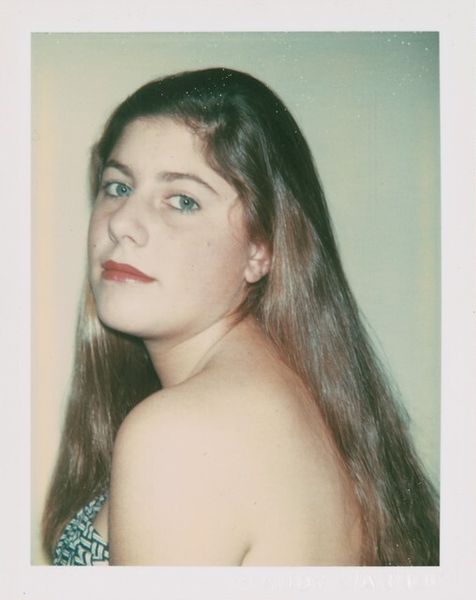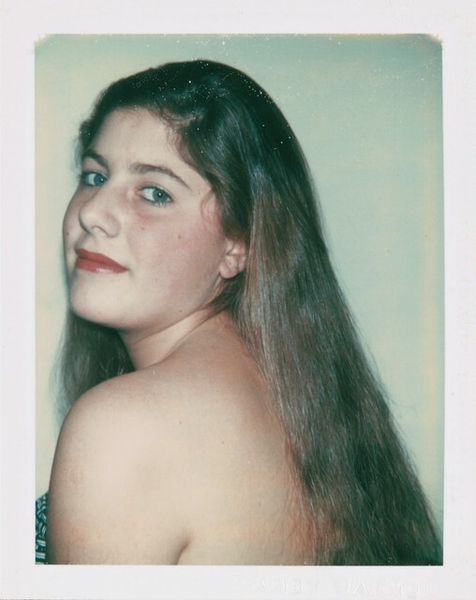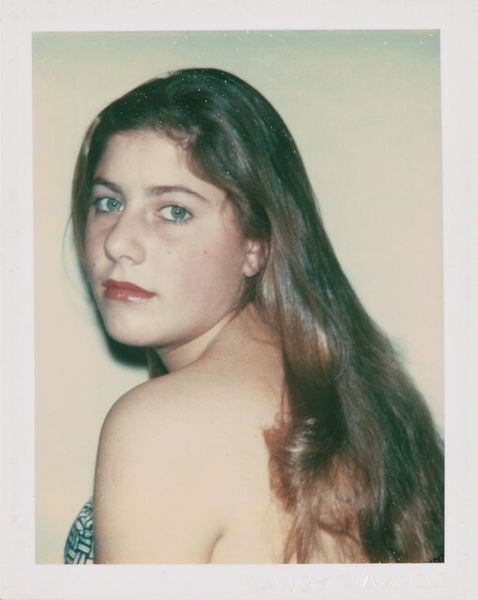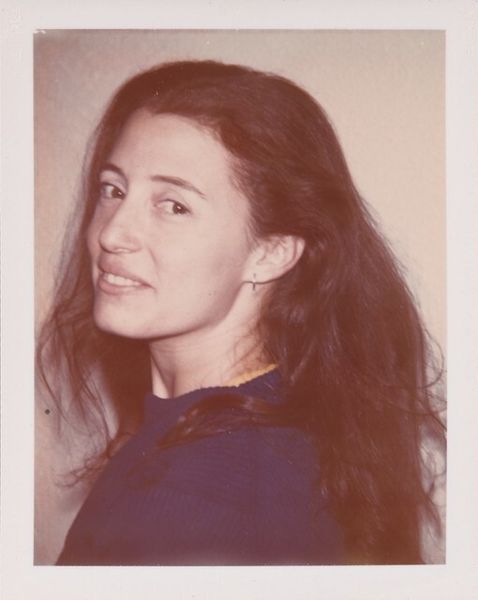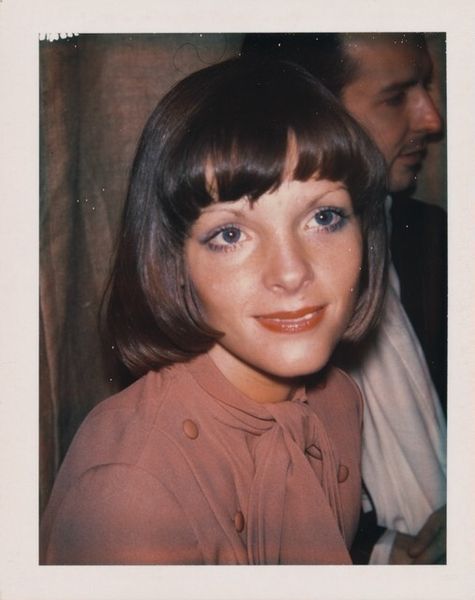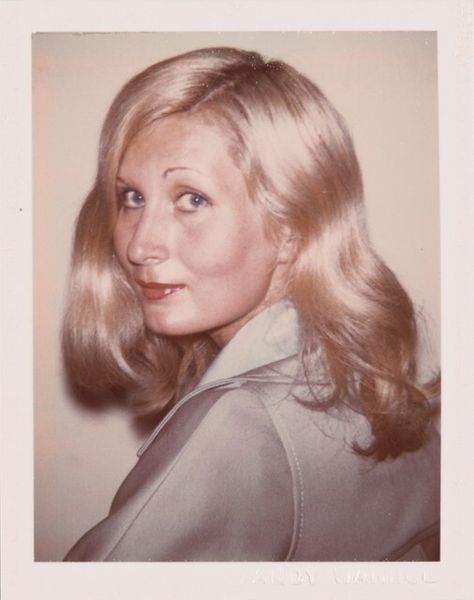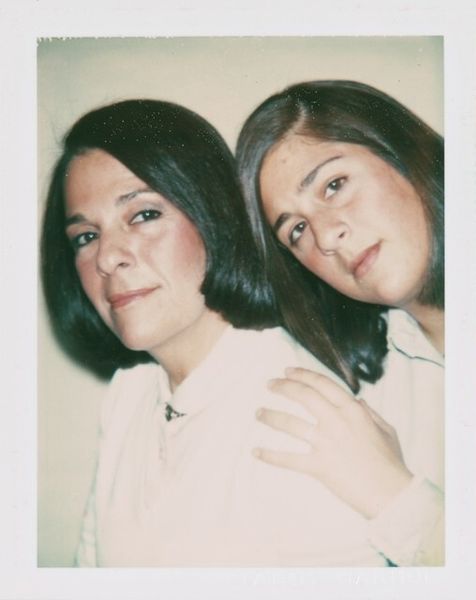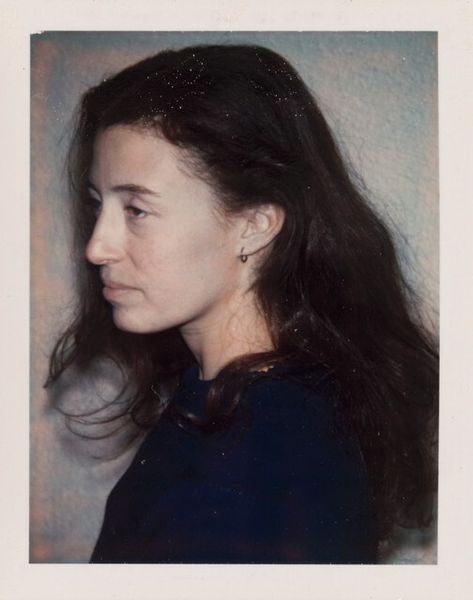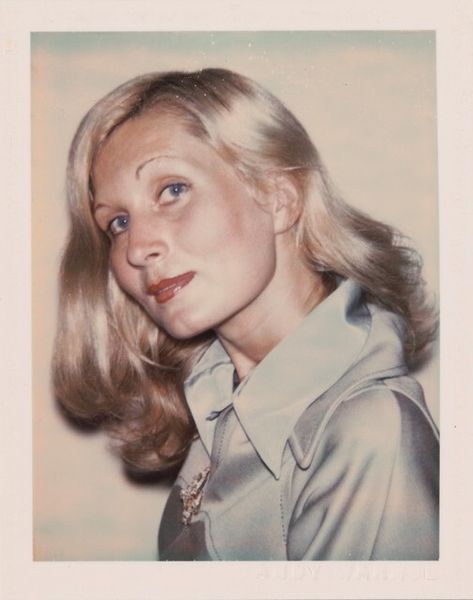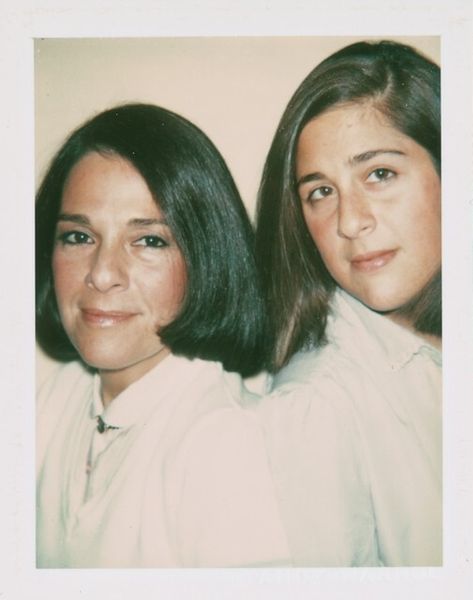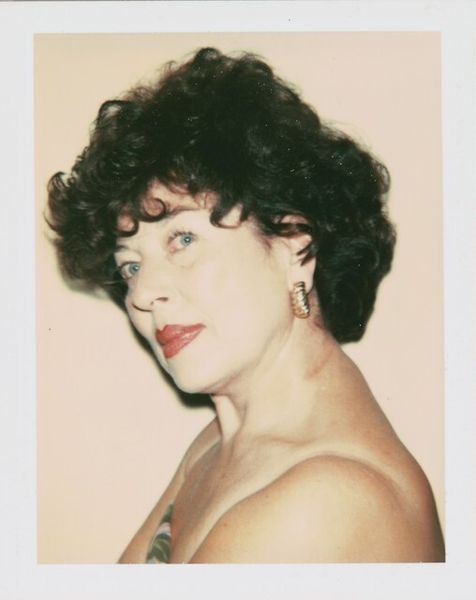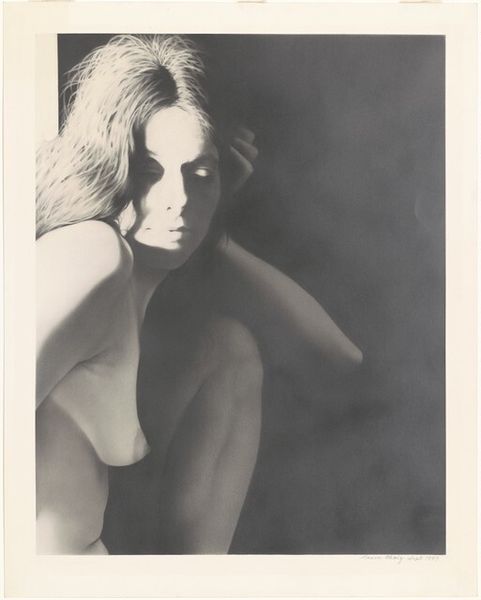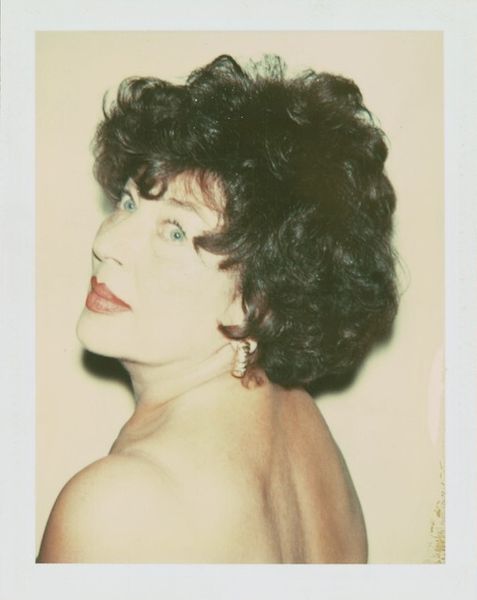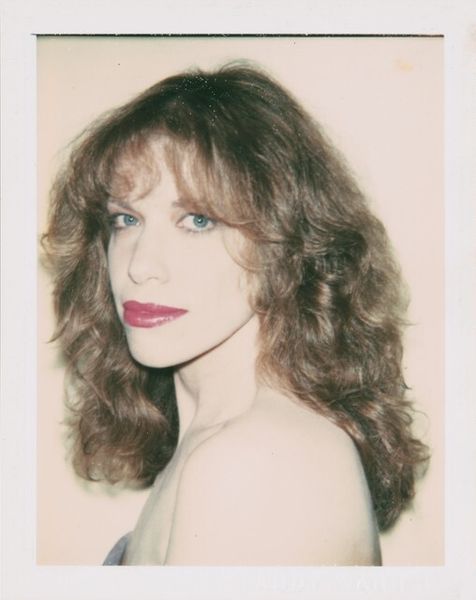
Dimensions: image: 9.5 × 7.3 cm (3 3/4 × 2 7/8 in.) sheet: 10.8 × 8.6 cm (4 1/4 × 3 3/8 in.)
Copyright: National Gallery of Art: CC0 1.0
Curator: This Polaroid portrait, simply titled "Andrea Feldman (Long Straight Dark Blonde Hair)" was created by Andy Warhol in 1981. The subject, Andrea Feldman, was one of Warhol’s superstars. What are your initial thoughts? Editor: I’m struck by the seeming simplicity, almost a vulnerability. It’s not the overtly staged, hyper-glamorous aesthetic Warhol is known for, at least on first glance. The off-center framing adds a slightly unsettling immediacy, don’t you think? Curator: Warhol’s Polaroids, especially of his "superstars," blur the line between personal documentation and calculated construction of image. He was acutely aware of the cultural power of image-making, especially within the Factory scene. Editor: Absolutely. Knowing Feldman’s tragic story, her eventual suicide, colors my perception. Warhol’s obsession with celebrity and death takes on a particularly unsettling weight here. Is it exploitative or an attempt to immortalize, to control the narrative? Curator: Warhol consistently engaged with the themes of fame, death, and the mass media. This particular image presents a rawness, devoid of the heavy screenprinting and vivid colors typical of his pop art prints, inviting questions regarding the artist's intent in representing Feldman so intimately. Editor: The Polaroid as a medium also speaks volumes. Instant, disposable, yet also strangely permanent. It’s interesting how Warhol used this technology of immediacy, pre-dating selfies, to capture a sense of fleeting beauty. It's a statement on the ephemerality of fame itself, right? Curator: Yes. The social context here is vital; it prompts us to remember the performative aspect of Warhol's entire practice. Every gesture, including choosing Feldman as a subject and creating these portraits, speaks to the culture he was both creating and documenting. He helped to define what we understand today as celebrity culture and its complicated intersections. Editor: Warhol's gaze itself is part of the story. This portrait serves as a document of the male gaze and invites crucial dialogues concerning exploitation, consent, and the agency of women within patriarchal frameworks. Andrea Feldman, therefore, transcends being just a muse; she serves as a touchstone, initiating vital dialogues concerning agency and representation within pop culture. Curator: Examining it from that perspective underscores the power dynamics embedded in artistic creation and reception. Thank you for drawing those complex narratives out. Editor: It has become much more to me than what I initially saw; considering these contextual layers significantly alters how we interpret its relevance today.
Comments
No comments
Be the first to comment and join the conversation on the ultimate creative platform.
